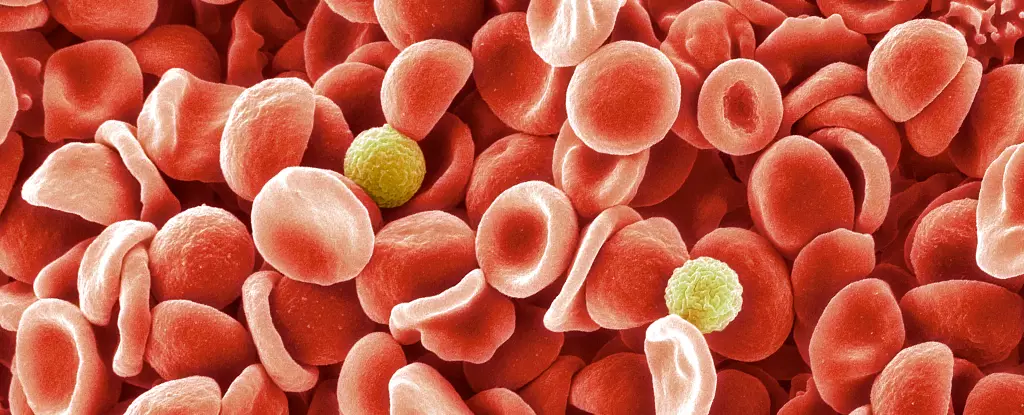

In a groundbreaking moment for hematology, the persistent curiosity of science has led to the unveiling of a new blood group system known as the MAL blood group. This discovery, stemming from a unique medical case in 1972, symbolizes the lengths to which researchers will go to understand the complexities of human biology. A routine blood sample taken from a pregnant woman revealed a mysterious absence of a well-known surface molecule, the AnWj antigen, found in virtually all human blood types. After 50 years of investigation, researchers from the UK and Israel joined forces to publish their findings, marking a new chapter in our comprehension of blood types.
This remarkable pursuit is not merely a footnote in medical history; it demonstrates how one seemingly isolated case can ignite decades of inquiry. UK National Health Service hematologist Louise Tilley, who dedicated nearly 20 years to this investigation, expressed the significance of this breakthrough. According to her, it provides “the best care to rare, but important, patients,” ultimately enhancing the potential for transfusion compatibility and patient safety.
Most individuals are familiar with the basics of blood types, primarily the ABO and Rh systems; however, the human blood group system is far more intricate. Numerous blood group systems exist, classified according to the various antigens that cover the surface of red blood cells. These antigens are crucial since they act as identification markers, distinguishing self from non-self. Any mismatch, particularly during blood transfusions, can lead to severe reactions—sometimes even fatal outcomes.
Tilley’s research unveils that the Mal blood group is just the latest in a long line of discoveries. Historically, many modern blood types were cataloged in the early 20th century. As more uncommon blood groups are identified, their implications on a global scale become even more apparent. The Er blood group, introduced in 2022, is another example of how intricate and nuanced blood group systems can be, affecting only a small subset of the population. This highlights a crucial dynamic in hematology: as we uncover new blood types, we also understand that the patients who fall into these rare categories deserve special attention and care.
Interestingly, research has shown that over 99.9% of people possess the AnWj antigen. As scientists delved into the genetic underpinnings of this absence, they discovered that mutations in the MAL gene were to blame. These findings suggest a potential hereditary nature, but interestingly, Tilley and her team also identified cases where blood disorders led to the suppression of the AnWj antigen, indicating that a single absence could stem from varied causes. This could obscure the diagnosis and lead to symptoms if not properly understood.
One of the illuminating aspects of this discovery is the role of the MAL protein in cellular stability and transport. By inserting the normal MAL gene into AnWj-negative blood cells, researchers successfully reintroduced the antigen, confirming its critical function. Such innovations showcase the potential power of genetic research in improving patient outcomes, pushing the boundaries of current medical science.
As the understanding of rare blood types deepens, the possibility of more accurate diagnostics emerges. With the identification of genetic markers for the MAL mutation, clinicians can now discern whether a patient’s AnWj-negative status is inherited or caused by suppression, which could hint at other underlying medical abnormalities. This advancement is particularly crucial because variations in blood groups can have severe consequences during medical procedures.
Vigilance in understanding rare blood types is paramount; the AnWj-negative phenotype may not always unveil immediate risks but could foreshadow potential health complications. A more tailored approach to patient blood management and further research into the implications of these blood anomalies can pave the way for improved patient care.
As scientists endeavor further into the nuances of human blood, the MAL blood group serves as a testament to the wonders of medical research. It highlights the dynamic nature of human biology while offering hope for enhanced health care tailored to the unique needs of all patients.
In the world of pharmaceuticals, innovation often hinges on finding new compounds that can lead…
In the heart of the Amazon basin, drastic climate changes present an alarming reality that…
Air fryers have rapidly surged in popularity, captivating home cooks and culinary enthusiasts alike. When…
In an era where technology and social media reign, the importance of sleep often takes…
In an era where environmental consciousness is paramount, the maritime industry has long been scrutinized…
Radionuclides, often relegated to discussions surrounding nuclear energy and radioactive waste, have far-ranging implications for…
This website uses cookies.